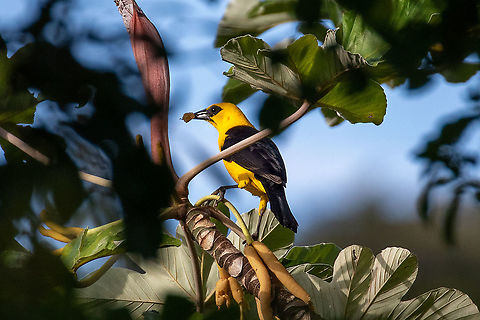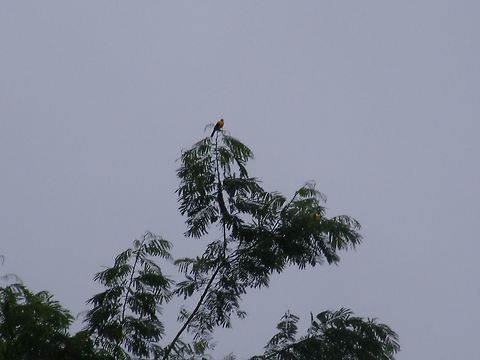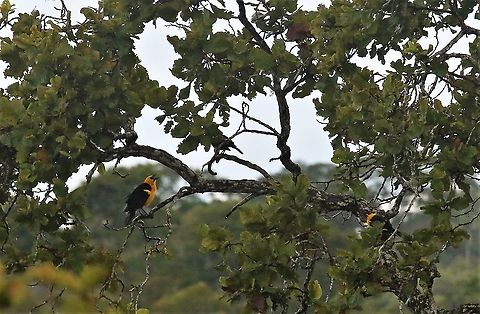
Appearance
The oriole blackbird grows to a length of nearly 30 cm . The sexes are similar in appearance. The head, neck, shoulders and underparts are bright yellow; the back, wings, rump and tail are black, apart from the lower wing-coverts showing a strip of yellow. The eye is brown and is surrounded by a black eye ring, and the large bill and feet are blackish. The voice consists of several loud, scratchy calls, uttered from elevated perches or emitted when on the wing. One is a screech that resembles the sound made by a rusty hinge.
Distribution
This icterid is found in the northern part of South America. Its range includes French Guiana, Guyana, Suriname, Venezuela, Colombia, Ecuador, Peru and northern Brazil. Its typical habitat is grassy areas with isolated trees near rivers, marshes, islands in rivers and gallery forest.
Status
''G. mexicanus'' is a fairly common species and has a very extensive range. Its total population has not been estimated but its population trend seems to be steady. For these reasons, the International Union for Conservation of Nature has assessed its conservation status as being of "least concern".Habitat
This icterid is found in the northern part of South America. Its range includes French Guiana, Guyana, Suriname, Venezuela, Colombia, Ecuador, Peru and northern Brazil. Its typical habitat is grassy areas with isolated trees near rivers, marshes, islands in rivers and gallery forest.The oriole blackbird is usually seen in pairs or small groups but does not form mixed species flocks. It perches in prominent positions on small trees or on the top of bushes and forages mostly on the ground, especially in muddy areas near water. They feed on invertebrates such as earthworms, caterpillars and winged insects, as well as frogs and fruit, and sometimes tear open ripening maize cobs to feed on the seeds.Breeding takes place in May and June. The nest is a cup-shaped structure about {{convert|17|cm|in|0|abbr
References:
Some text fragments are auto parsed from Wikipedia.